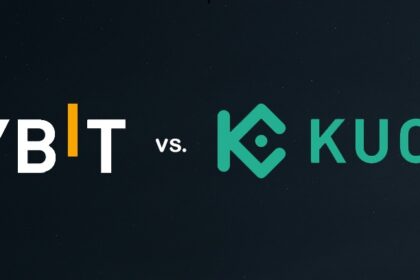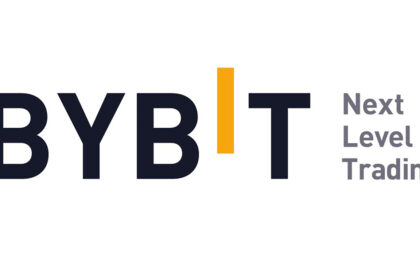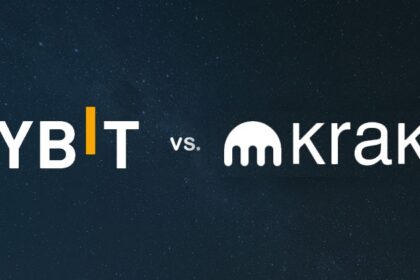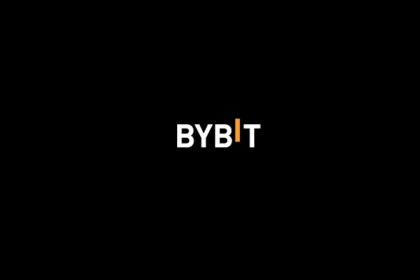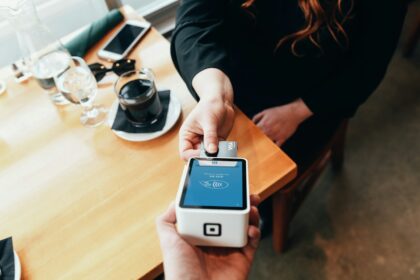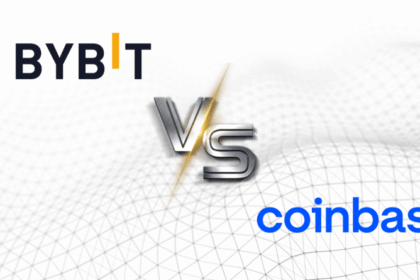A Comprehensive Guide on How to Trade Crypto Futures
Welcome to the world of cryptocurrency trading. You have probably heard about buying and selling coins like Bitcoin or Ethereum. This is called spot trading. You buy a coin, you own it, and you hope its price goes up.
However, there is another, more advanced way to trade: crypto futures. This guide will explain, in simple terms, exactly what they are and provide a detailed look at how to trade crypto futures. This method allows you to potentially profit not just when prices go up, but also when they go down. It also introduces a powerful tool called leverage. But with great power comes great responsibility (and risk!).
This article is a deep dive. We will cover everything from the basic concepts to step-by-step instructions and critical risk management. Let’s begin.
Chapter 1: Understanding the Core Concepts
Before you can trade, you must understand what you are trading. Let’s break down the essential terms.
What is a Futures Contract?
At its core, a futures contract is a simple agreement. It is a deal between a buyer and a seller to trade a specific asset (like Bitcoin) at a predetermined price on a specific date in the future.
Imagine a farmer who grows wheat. He is worried the price of wheat will fall in 3 months when he harvests. He can sell a “futures contract” today, locking in a price of $10 per bushel. A bread maker, worried the price will rise, buys that contract. In 3 months, they exchange the wheat for $10, no matter the actual market price. They both managed their risk.
Crypto futures work the same way, but with one major difference: most traders are not interested in actually owning the Bitcoin. They are speculating. They are betting on whether the price will be higher or lower in the future. When the contract ends, they just settle the difference in cash (or stablecoins like USDT).
Traditional Futures vs. Perpetual Futures (Perpetuals)
This is a very important distinction in the crypto world.
- Traditional Futures: These have an expiry date. For example, a “BTC December 2024” contract will expire on a specific day in December. At expiry, the contract is settled.
- Perpetual Futures (or Perpetual Swaps): These are the most popular type in crypto. They do not have an expiry date. You can hold a position for as long as you want—minutes, days, or even months.
You might ask: “If there is no expiry date, what keeps the futures price close to the actual Bitcoin price (the ‘spot’ price)?”
The answer is a mechanism called the Funding Rate.
The Funding Rate (Crucial Concept)
The funding rate is a small fee paid periodically (usually every 8 hours) between traders who are holding long positions (betting the price goes up) and traders who are holding short positions (betting the price goes down).
- If the futures price is higher than the spot price (more people are bullish/long), the funding rate is positive. This means longs must pay shorts. This encourages people to sell (go short), pushing the futures price down towards the spot price.
- If the futures price is lower than the spot price (more people are bearish/short), the funding rate is negative. This means shorts must pay longs. This encourages people to buy (go long), pushing the futures price up towards the spot price.
This is not a fee paid to the exchange. It is a trader-to-trader payment that keeps the market stable. When you learn how to trade crypto futures, you must always be aware of the next funding rate and whether you will pay or receive it.
Spot Trading vs. Futures Trading
Let’s compare buying Bitcoin directly (spot) with trading its future.
| Feature | Spot Trading | Futures Trading |
|---|---|---|
| Ownership | You buy and own the actual cryptocurrency. You can withdraw it to your own wallet. | You own a contract. You do not own the underlying asset. You are just betting on its price. |
| Profit Potential | You only profit if the price goes up. | You can profit if the price goes up (going long) or if the price goes down (going short). |
| Leverage | Generally, no leverage. $100 buys you $100 worth of crypto. | High leverage is available (e.g., 5x, 20x, even 100x). This magnifies profits and losses. |
| Complexity | Simple. Buy, hold, sell. | More complex. Involves margin, liquidation, funding rates. |
Essential Terminology
Here are a few more terms you absolutely must know.
- Long Position: You open a ‘long’ position if you believe the price will go up. You are ‘buying’ a contract.
- Short Position: You open a ‘short’ position if you believe the price will go down. You are ‘selling’ a contract.
- Margin: This is the money you put down to open a leveraged position. It is your collateral, like a deposit.
- Leverage: A tool that lets you open a position that is much larger than your margin. We will cover this in detail next.
- Liquidation: This is the biggest risk. It is when the exchange forcibly closes your position because the price moved against you and your margin is (almost) gone. You lose your margin.
Chapter 2: The Power and Peril of Leverage
Leverage is the main reason many people are drawn to futures trading. It is also the main reason many people lose their money. Understanding it is not optional.
What is Leverage in Simple Terms?
Leverage is like using a loan to make a bigger trade. The exchange “lends” you the money to control a large position with a small amount of your own capital (your margin).
It is expressed as a ratio, like 5x, 10x, or 50x.
- With $100 and 10x leverage…
- …you can open a position worth $1,000 ($100 x 10).
Why is this powerful?
Let’s say you open a $1,000 long position on Bitcoin using 10x leverage (your margin is $100). Bitcoin’s price then goes up by 5%.
- Your $1,000 position is now worth $1,050.
- You close the position. Your profit is $50.
- But you only invested $100 of your own money!
- A 5% move in the market resulted in a 50% profit on your margin ($50 profit / $100 margin).
This is the magic of leverage. It magnifies your profits.
The Dark Side of Leverage: Magnified Losses and Liquidation
Leverage is a double-edged sword. It magnifies your losses in exactly the same way.
Let’s use the same example: $1,000 long position, 10x leverage, $100 margin. But this time, Bitcoin’s price drops by 5%.
- Your $1,000 position is now worth only $950.
- Your position has a loss of $50.
- This $50 loss is deducted from your $100 margin. Your margin is now just $50.
- A 5% move against you wiped out 50% of your investment.
But what if the price drops by 10%?
A 10% drop on a 10x leveraged position means a 100% loss (10% x 10 = 100%).
Your $1,000 position would lose $100. This is the entire amount of your margin. Before this even happens, the exchange will step in and liquidate you. They will forcibly close your position, and you will lose your entire $100 margin. All of it.
This is the single most important concept to understand.
- At 10x leverage, a ~10% price move against you = Liquidation.
- At 20x leverage, a ~5% price move against you = Liquidation.
- At 50x leverage, a ~2% price move against you = Liquidation.
- At 100x leverage, a ~1% price move against you = Liquidation.
Using high leverage is like balancing on a knife’s edge. A tiny, normal market fluctuation can wipe you out instantly. Beginners should never, ever use high leverage. Starting with 3x to 5x is more than enough.
Isolated Margin vs. Cross Margin
Exchanges give you two ways to manage your margin:
- Isolated Margin: You assign a specific amount of margin to a single position (e.g., $100). If that position gets liquidated, you only lose that $100. The rest of the money in your futures account is safe.
- Cross Margin: This mode uses all the available balance in your futures account as margin for all your open positions. If one position starts to lose badly, it will draw margin from your account balance and even from the profits of your other positions.
Which is better?
For beginners, Isolated Margin is almost always recommended. It limits your risk. You know exactly how much you can lose on any single trade. Cross margin is for advanced traders who are managing multiple positions and want to avoid liquidation on a position they are confident in, but it carries the massive risk of liquidating your entire account from one bad trade.
Ready to Start Trading Futures?
Bybit is a world-class exchange, trusted by millions and known for its high-performance engine and deep liquidity. It’s one of the best places to trade crypto futures.
Chapter 3: How to Trade Crypto Futures: A Step-by-Step Guide
Okay, you understand the concepts. You know the risks. Now, let’s walk through the actual process. This is your practical guide on how to trade crypto futures.
Step 1: Choose the Right Exchange
This is your most important first step. Do not just pick a random exchange. You need one that is:
- Secure: Has strong security measures, proof of reserves, and a good reputation.
- Liquid: “Liquidity” means there are many buyers and sellers. This ensures you can open and close trades instantly at a fair price. Low liquidity causes “slippage” (getting a worse price than you wanted).
- Reliable: The platform must not crash during high volatility. A trading engine that freezes can cost you thousands.
- User-Friendly: Has an interface that you can understand.
As mentioned, Bybit is a top-tier choice specifically for derivatives and futures trading, known for its excellent engine and deep liquidity.
Step 2: Create and Fund Your Account
The process is generally the same on most major exchanges.
- Sign Up: Create an account using your email or phone number.
- Complete KYC: “Know Your Customer” is a legal requirement. You will need to submit a photo of your ID (like a driver’s license or passport) and possibly a proof of address.
- Deposit Funds: You can deposit cryptocurrency (like BTC, ETH, or USDT) from another wallet, or you can buy crypto directly on the exchange using your credit card or bank transfer.
- Transfer to Futures Wallet: Exchanges keep your money in different “wallets” or “accounts.” You will have a “Spot Account” and a “Futures/Derivatives Account.” You must transfer the funds (e.g., USDT) from your Spot Account to your Futures Account before you can trade. This is an internal, free, and instant transfer.
Step 3: Understanding the Trading Interface
When you open the futures trading page, you will see a lot of information. It can be overwhelming. Let’s break it down.
- The Chart: This is the large graph in the middle, showing the price history.
- The Order Book: A list of all current “buy” (bids) and “sell” (asks) orders from other traders.
- Order Entry Panel: This is your command center. This is where you will place your trades.
- Positions Panel: At the bottom, this is where your open trades will appear. You can see your position size, entry price, current profit/loss (P&L), and (most importantly) your Liquidation Price.
Take your time. Look around. Do not rush to place a trade. Understand where everything is.
Step 4: Placing Your First Order
Let’s walk through filling out the order entry panel.
- Choose Your Contract: At the top, select the pair you want to trade (e.g., BTC/USDT or ETH/USDT). Make sure it is a Perpetual contract.
- Set Margin Mode: Select Isolated or Cross. As a beginner, choose Isolated.
- Set Leverage: You will see a slider or box to set your leverage. Be responsible. Start with 3x or 5x.
- Choose Your Order Type: This is how you enter the market.
- Market Order: This order executes immediately at the best currently available price in the order book. It is fast, but you might pay a slightly higher price (slippage). Use this if you need to get in or out right now.
- Limit Order: This order lets you set your own price. If you want to “go long” on BTC at $60,000 (and the current price is $60,100), you set a limit buy at $60,000. Your order will only be filled if the price drops to your level. This gives you a better entry but there is no guarantee your order will ever be filled.
- Set the Size: You can enter how much you want to trade (e.g., 0.1 BTC) or how much margin you want to use.
- Set Take-Profit (TP) and Stop-Loss (SL): THIS IS THE MOST IMPORTANT PART OF RISK MANAGEMENT.
- A Take-Profit (TP) order automatically closes your position at a certain profit target. (e.g., “If my trade is up 20%, sell it.”)
- A Stop-Loss (SL) order automatically closes your position at a small, predetermined loss. This is your seatbelt. This is what prevents you from being liquidated. It says, “If this trade is wrong and I am down 5%, get me out. I accept this small loss.”
Never, ever open a futures trade without a Stop-Loss.
- Click “Buy/Long” or “Sell/Short”:
- Click Buy/Long if you believe the price will go up.
- Click Sell/Short if you believe the price will go down.
Step 5: Managing and Closing Your Position
Once your order is filled, it will appear in your “Positions” panel. Now you must manage it.
- Monitor Your Position: Watch your “Unrealized P&L” (your current profit or loss).
- Watch Your Liquidation Price: Always know this number. Your stop-loss should be set before this price is ever reached.
- Adjusting TP/SL: You can often change your Take-Profit and Stop-Loss orders even after the trade is open. For example, if the trade moves in your favor, you can move your stop-loss up to your entry price. This creates a “risk-free” trade.
- Closing Manually: You do not have to wait for your TP or SL. If you want to close your trade at any time, you can click a “Close” or “Market Close” button. This will close your position immediately at the current market price.
Trade with Confidence
A great platform is your first step. Bybit offers robust security, 24/7 support, and advanced trading tools to help you manage your risk effectively.
Chapter 4: Risk Management: The Key to Survival
This is the most important chapter in this entire guide. You can have the best strategy in the world, but without risk management, you will lose all your money. Period.
Trading is not about being right 100% of the time. It is about making more money on your winning trades than you lose on your losing trades. This is risk management.
Rule #1: Never Risk More Than You Can Afford to Lose
This is not just about futures; it applies to all investing. The money you put into a futures account should be money you are fully prepared to lose. Do not trade with your rent money, your tuition money, or your emergency savings.
Rule #2: Position Sizing (The 1-2% Rule)
This is how professional traders stay in the game. It is a simple rule:
Never risk more than 1% or 2% of your *total trading account* on a single trade.
Let’s see what this means:
- You have a total trading account of $1,000.
- You decide to follow the 1% rule.
- This means the maximum you are allowed to lose on any single trade is $10 ($1,000 * 0.01).
“Only $10?” you ask. “That’s tiny!”
This $10 is your risk, not your margin. This $10 determines where you set your stop-loss. If your $10 stop-loss is hit, you lose $10, and you still have $990 in your account. You can be wrong 10 times in a row and still have $900 left to trade.
A trader who goes “all-in” with their $1,000 on one trade can be wrong once and be out of the game forever. This is how you learn how to trade crypto futures safely.
Rule #3: The Indispensable Stop-Loss
We’ve said it before, and we will say it again. A stop-loss is not optional. It is your primary risk management tool. It is the part of your trading plan that says, “This is the point where my idea was proven wrong, and I will exit the trade.”
A trade without a stop-loss is not a trade. It is a gamble. It is a hope. And hope is not a strategy. A stop-loss protects you from yourself and from catastrophic losses.
Rule #4: Understand Your Risk/Reward Ratio (R:R)
Before you enter any trade, you must know two things:
- Your Risk (where your stop-loss is).
- Your Reward (where your take-profit is).
The Risk/Reward Ratio compares these two. For example:
- You enter a long trade on ETH at $3,000.
- You set your Stop-Loss at $2,950. (Your Risk is $50).
- You set your Take-Profit at $3,150. (Your Reward is $150).
Your ratio is $150 (Reward) to $50 (Risk), which simplifies to 1:3. This is a good R:R trade. It means for every $1 you are risking, you are aiming to make $3.
Why is this vital? Because with a 1:3 R:R, you only need to be right one out of four times to break even (not counting fees). If you win 2 out of 4 trades, you are highly profitable.
Professional traders do not take trades with a bad R:R (like 1:1 or worse). They wait for high-quality setups where the potential reward is much greater than the risk.
Rule #5: Avoid “Revenge Trading” and FOMO
Trading is 80% psychology. Two emotions will destroy your account:
- Fear/Greed (FOMO): “Fear Of Missing Out.” The price is pumping, and you jump in at the top without a plan because you are afraid of missing the gains. This is a great way to buy just before the price crashes.
- Anger (Revenge Trading): You just lost a trade. You are angry at the market. You immediately jump into another, bigger, riskier trade to “win your money back.” This is pure gambling and will almost certainly lead to another, bigger loss.
After a big loss, the best thing to do is walk away from the computer. Clear your head. Come back tomorrow. The market will still be there.
Chapter 5: Basic Strategies for Trading Futures
Now that you have the mechanics and risk management, what do you trade? You need a strategy. A strategy is a set of rules that tells you when to buy, when to sell, and when to do nothing. Here is a brief overview of how to trade crypto futures using simple strategies.
Strategy 1: Trend Following
This is the most popular strategy for a reason. The idea is simple: “The trend is your friend.”
- Identify the Trend: Look at a chart (e.g., a 4-hour or 1-day chart). Is the price generally moving up (an uptrend) or down (a downtrend)?
- Use Indicators: A simple Moving Average (MA) can help. If the price is consistently staying above the 50-day MA, it is in an uptrend. If it is below, it is in a downtrend.
- Trade with the Trend:
- In an uptrend, you only look for opportunities to go long (buy). You might buy when the price pulls back to and “bounces” off the moving average.
- In a downtrend, you only look for opportunities to go short (sell).
This strategy prevents you from fighting the market’s momentum.
Strategy 2: Support and Resistance (S/R)
This is another classic. Look at a chart and draw horizontal lines at price levels where the market has reacted strongly in the past.
- Support: A price “floor” where the price has dropped to and then bounced off multiple times. Buyers tend to step in here. This is a potential area to go long. Your stop-loss would go just below this support level.
- Resistance: A price “ceiling” where the price has risen to and then been rejected from multiple times. Sellers tend to step in here. This is a potential area to go short. Your stop-loss would go just above this resistance level.
You can either “trade the bounce” (long at support, short at resistance) or “trade the break” (if price smashes *through* resistance, go long, expecting it to continue higher).
Strategy 3: Hedging (Advanced)
This is not a profit-seeking strategy but a risk-management strategy. It is one of the original purposes of futures.
Example:
- You hold 1 BTC in your spot wallet, which you bought at $50,000. You plan to hold it for years.
- The market looks very shaky, and you are worried about a 20% crash in the short term. You do not want to sell your long-term BTC.
- Solution: You open a 1 BTC short position in the futures market.
- Now, one of two things happens:
- The price crashes 20%. Your spot BTC loses 20% of its value. But your 1 BTC short position gains 20%. The loss is (mostly) canceled out by the futures profit. You have “hedged” your position.
- The price unexpectedly rips 20% higher. Your spot BTC gains 20%. Your 1 BTC short position loses 20%. You are back to even.
Hedging is like buying insurance for your spot holdings. It locks in your portfolio’s value, protecting you from downside (at the cost of missing out on upside).
Chapter 6: Why Bybit is a Great Choice
When you are deciding how to trade crypto futures, your choice of platform is critical. A bad platform can make even a good strategy fail. Bybit has established itself as a leader in the derivatives market for several key reasons.
High-Performance Trading Engine
The worst thing that can happen in trading is “system overload.” This is when a market is moving fast, and you try to close your position, but the exchange freezes. Bybit is renowned for its powerful matching engine, capable of handling 100,000 transactions per second. This means your orders get filled when you want them to, without lag.
Deep Liquidity and Tight Spreads
Bybit consistently ranks as one of the most liquid exchanges in the world. This deep liquidity (lots of buyers and sellers) means a “tight spread” (the tiny gap between the highest buy price and the lowest sell price). This ensures you get a fair price when you enter and exit, minimizing slippage.
Excellent User Interface and Tools
The platform is clean, fast, and intuitive for both beginners and professionals. It offers a full suite of advanced order types (TP/SL, conditional orders) and robust charting tools, giving you everything you need to execute your strategies.
Security and Customer Support
With a multi-layered security system, cold wallet storage for the vast majority of funds, and a public Proof of Reserves, Bybit takes security seriously. They also offer 24/7 live customer support, which is crucial if you ever have an issue with a trade.
Get a Bonus When You Join Bybit!
Use our referral code when signing up to receive exclusive deposit bonuses and trading fee discounts. Start your journey on a top-tier platform.
Bybit Referral Code Bonus
When you sign up, you can use a referral code to get significant rewards, such as a deposit bonus (up to $30,000) or trading fee rebates. This gives you extra capital to start with.
- For Global Users (outside the EU): Use code BYBIT31
- For European Union (EU) Users: Use code BYBIT3K
Using a code is a simple way to get the most value when you create your account.
Don’t Wait! Sign Up Today.
Join millions of other traders on Bybit. Click the correct link for your region below to get started and claim your sign-up rewards!
Chapter 7: Common Mistakes to Avoid
You have learned what to do. Now let’s learn what not to do. Avoiding these common pitfalls is just as important as having a good strategy. Here is a list of the fastest ways to lose money.
Mistake 1: Using Insane Leverage
We’ve covered this, but it must be repeated. Exchanges offer 100x or 125x leverage because it looks attractive and makes them money from liquidations. It is a trap for new traders. A 1% market move should not be a “game over” event. Stick to low leverage (3-5x) and focus on good strategy.
Mistake 2: Trading Without a Plan
If you cannot answer these three questions, you are not trading, you are gambling:
- What is my entry price? (Your plan to get in)
- What is my stop-loss price? (Your plan to get out if you are wrong)
- What is my take-profit price? (Your plan to get out if you are right)
This is the bare minimum of a trading plan. Write it down. Stick to it.
Mistake 3: Risking Too Much on One Trade
This is a position-sizing failure. Going “all-in” on one trade you feel “really good about” is how you blow up an account. Follow the 1-2% rule. Your goal is not to get rich today. Your goal is to be able to trade again tomorrow.
Mistake 4: Moving Your Stop-Loss
This is a fatal error. You set a stop-loss at $2,950. The price starts to drop and gets close. You get scared and move your stop-loss down to $2,900, thinking “it will bounce back, I just need to give it more room.” This is you overriding your plan with emotion. A stop-loss should only ever be moved in the direction of your profit (to lock in gains), never to increase your potential loss.
Mistake 5: Not Understanding the Funding Rate
This is a more subtle mistake. You might hold a long position for a week, thinking you are profitable. But if the funding rate is positive and high, you could be paying 0.1% of your entire position size every 8 hours. This can eat away all your profits. Always be aware of the funding rate and when it is charged.
Conclusion: The Final Word
Trading crypto futures can be a powerful tool. It gives you the flexibility to profit from any market direction—up or down—and to use leverage to amplify your gains. It is a key component for anyone who is serious about how to trade crypto futures.
However, it is not a get-rich-quick scheme. It is a high-risk, high-reward activity that demands education, a solid strategy, and, above all, disciplined risk management. The leverage that magnifies your profits will just as quickly magnify your losses and lead to liquidation if you do not respect it.
Your journey is just beginning. Start small. Use low leverage. Test your strategies, perhaps even with a demo account if your exchange offers one. Learn from your losses, do not repeat them. And never, ever trade with money you cannot afford to lose.
Good luck, and trade smart.
Frequently Asked Questions (FAQ)















